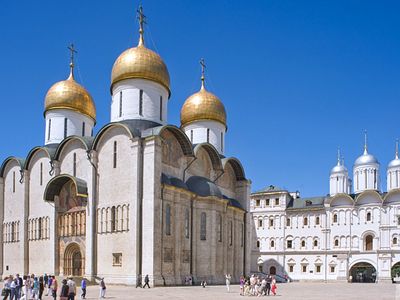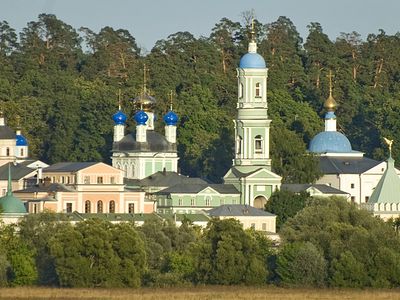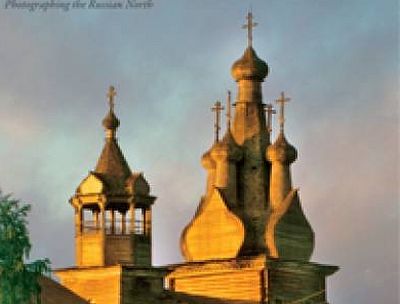Source: Russia Beyond the Headlines
March 17, 2017
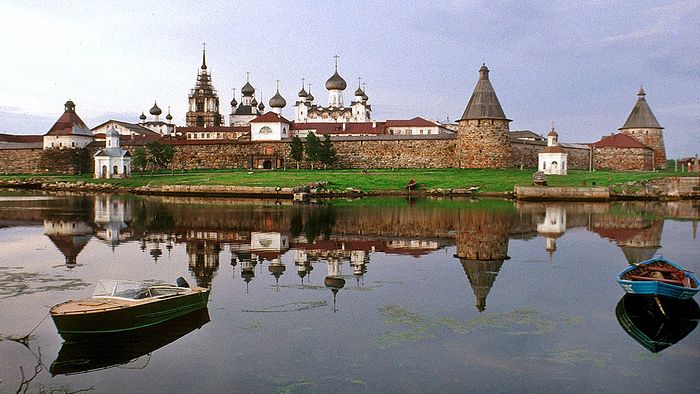 Solovetsky Transfiguration Monastery, southwest view across Bay of Felicity. Dusk at midnight, June 29, 1999. Source: William Brumfield
Solovetsky Transfiguration Monastery, southwest view across Bay of Felicity. Dusk at midnight, June 29, 1999. Source: William Brumfield
At the beginning of the 20th century, the Russian chemist and photographer Sergei Prokudin-Gorsky invented a complex process for vivid, detailed color photography (see box text below). Inspired to use this new method to record the diversity of the Russian Empire, he photographed numerous historic sites during the decade before the abdication of Tsar Nicholas II in 1917.
Among the most remote places photographed was the Solovetsky Transfiguration Monastery, located on Great Solovetsky Island, part of an archipelago in the southwestern part of the White Sea. Prokudin-Gorsky’s visit occurred in the summer of 1916 as the Great War raged in Europe. His special passage to the island during such difficult times was due to his role in a state commission to photograph construction of a railroad to the new port of Murman, under construction for supplies from the Western allies. Prokudin-Gorsky made his way by rail to the White Sea port of Kem and from there traveled nearly 30 miles by boat to Solovetsky Island.
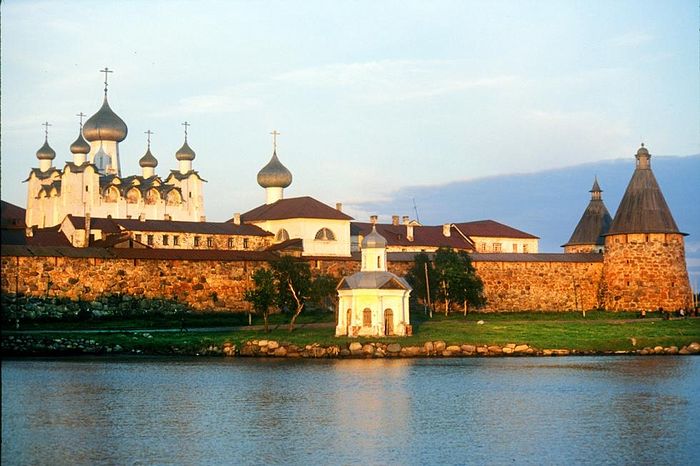 Solovetsky Transfiguration Monastery, northwest view from harbor pier. July 25, 1998. / Photo: William Brumfield
Solovetsky Transfiguration Monastery, northwest view from harbor pier. July 25, 1998. / Photo: William Brumfield
The Prokudin-Gorsky Collection contains 20 photographs that he made at or near the monastery. All but three of the original glass negatives with the three-color separations have been preserved, yet the best shot of the main ensemble with the great Transfiguration Cathedral exists only in a black and white image from his album of contact prints. My visits occurred in the summers of 1998 and 1999, an ideal time, as most of the exterior scaffolding had been removed following the completion of major restoration projects.
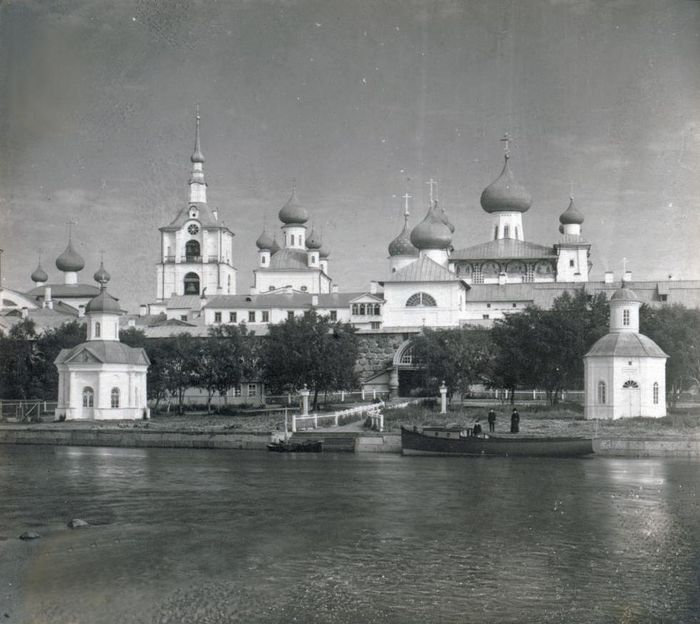 Solovetsky Transfiguration Monastery, west view. From left: Refectory Church of Dormition; Chapel of St. Alexander Nevsky; bell tower; Church of St. Nicholas; Church of Annunciation; west wall & Holy Gate; Transfiguration Cathedral; Chapel of Sts. Peter & Paul. Summer 1916. / Photo: Sergei Prokudin-Gorsky
Solovetsky Transfiguration Monastery, west view. From left: Refectory Church of Dormition; Chapel of St. Alexander Nevsky; bell tower; Church of St. Nicholas; Church of Annunciation; west wall & Holy Gate; Transfiguration Cathedral; Chapel of Sts. Peter & Paul. Summer 1916. / Photo: Sergei Prokudin-Gorsky
In the vast territory of the Russian north, no place carries more historical weight than the place commonly known as Solovki. The archipelago's first known Russian settlement dates from 1429, when the monk Zosima joined forces with Herman, an illiterate hermit who had visited Solovetsky Island. Although the elderly Zosima died in 1435, the following year another monk, Savvaty, came to the island and founded a monastery dedicated to the Transfiguration of the Savior. Initially the monastery belonged to the Russian city-state of Novgorod, but after Novgorod’s subjugation to Moscow in 1478, the Muscovite grand princes gained this strategic outpost
Growth and expansion
The flourishing of the monastery occurred in the mid-16th century under the direction of Philip (Feodor Kolychev), a Moscovite monk of noble origins who left his privileged existence in 1537, joined the Solovetsky monastic community, and in 1547 became its spiritual leader (hegumen). During the next 18 years, Philip guided a program of construction that transformed the monastery and created monumental buildings of stone and brick such as the Cathedral of the Transfiguration of the Savior (1558-1566), one of the most impressive examples of medieval Russian architecture.
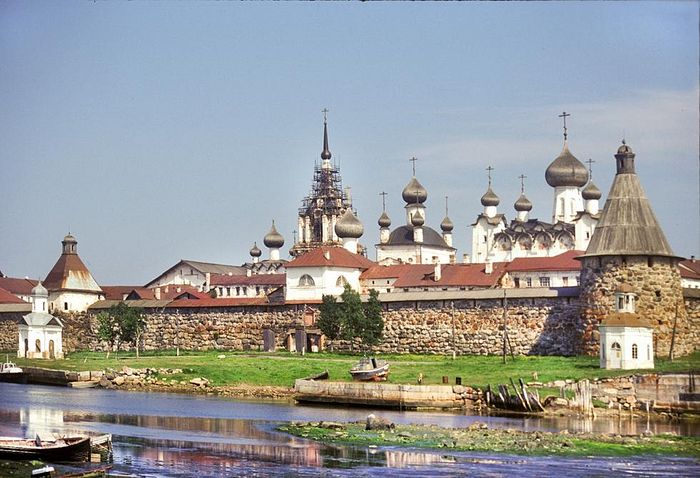 Solovetsky Transfiguration Monastery, southwest view at harbor. From left: Chapel of St. Alexander Nevsky; west wall; Refectory Church of Dormition; bell tower; Church of Annunciation over Holy Gate; Church of St. Nicholas; Transfiguration Cathedral; Chapel of Sts. Peter & Paul. June 29, 1999. / Photo: William Brumfield
Solovetsky Transfiguration Monastery, southwest view at harbor. From left: Chapel of St. Alexander Nevsky; west wall; Refectory Church of Dormition; bell tower; Church of Annunciation over Holy Gate; Church of St. Nicholas; Transfiguration Cathedral; Chapel of Sts. Peter & Paul. June 29, 1999. / Photo: William Brumfield
In the summer of 1566 Philip was called back to Moscow by Ivan the Terrible, who supported the monk’s appointment as metropolitan (head) of the Russian Orthodox Church. Tragically, his public resistance to acts of political terror by Ivan IV during the late 1560s led to the prelate’s exile and death in 1569.
...
Read the rest at Russia Beyond the Headlines...

